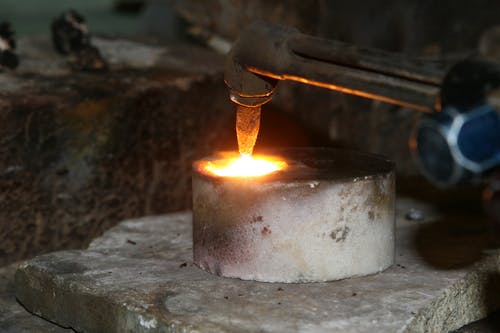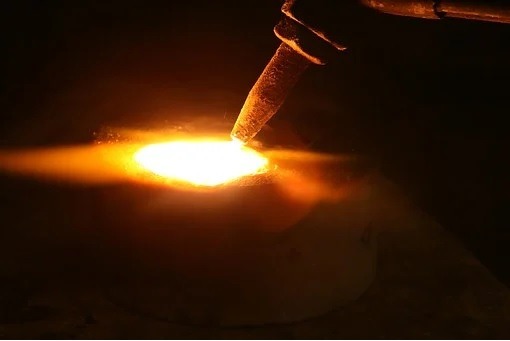Are you currently double-checking your eyes because you think that letter S is redundant here in this title? Well, if that’s what you think, then we have to disappoint you. This word is written accurately, and it refers to the process of deriving a metal from its ore.
This definition may seem a bit confusing, but that’s why we are here to explain it in a simpler way. Furthermore, if this topic tickles your fancy, keep scrolling!
How Much Do We Really Know About It?
Most of us have some basic knowledge about it, but it is so much more to learn about it. As we mentioned in the beginning, it is an incredibly crucial part of the mining process, extenuating the extraction of various types of metals, such as copper, silver, iron from their ores.
We managed to dig up some amusing facts, and we would be pleased to share them with you. Scroll down to uncover more details about it!
A Tale As Old As Time
According to some information, smelting is actually prehistoric, meaning that it had begun some between 3500 and 3000 BCE in Egypt. On the other hand, some scientists claim that it goes way back to 6500 BCE in a place that now Turkey occupies.
Furthermore, the first two metals that were smelted were lead and tin and then later followed by copper. It’s interesting to learn that Serbia (Belovode and Plocnik) has started first with copper smelting way back between 5500 and 5000 BCE.
An extremely exhausting process
You must really love it in order to do it in the right way. Take into consideration that it is often (if not all the time) quite tiresome and that it requires a lot of time and effort.
It takes lots of hours to and you’ve gotta have nerves of steel to see the outcome. What is negative about it is the fact that until the end there is no guarantee that things will work out perfectly or solid.
Moreover, there are so many questions that can be asked during this operation and you could still be left without answers. Still, some smelting companies can resolve all your doubts by giving you the proper info. For anything that concerns you regarding this process, find out more here, and who knows, things might become less confusing.
How Is Technology Affecting This?
Are things getting better or worse? – Luckily, the situation is improving with each of them. Namely, brand-new technologies are playing a key role in both preventing and reducing smelter pollution.
Furthermore, the elimination of various raw materials, such as recycling aluminum cans, as well as batteries, means that we don’t need to process ore as much as we used to. This automatically leads to pollution reduction.
Modern days and smelting
This complicated procedure also requires different steps that must be taken before anything else. The entire point of it is to concentrate the metal ore to the maximum.
First, during this process, a certain metal is mixed with oxygen. Once this occurs, it is then heated to a high temperature, with a goal to merge the oxide with the carbon in the fuel. By utilizing a flux, various imperfections widely known as gangue are being removed. The final “product” that we get is called slag.
In the last couple of years, numerous SR technologies have employed non-coking coal with the intention of avoiding any serious damages to the environment. When it comes to copper smelting, a reverberatory furnace is mostly used. A mixture of flux and concentrated ore is being placed to the top, while molten matte then ends up at the bottom.
Let’s Make Things Clear
Melting An Entirely Different Thing
People often think that these terms represent the same thing, which is completely wrong. For instance, it’s important to remember that during melting only one thing is altered – the physical state of the substance. Now, that’s not the case with the second process.
Namely, during smelting heat is being used as well as various reducing substances to induce some form of chemical change so that a metal can be extracted from its ore. Usually, metal ore is combined with a source of carbon such as coke, or charcoal.
It’s interesting to learn that ancient civilizations utilized only seven metals: mercury, gold, iron, tin, lead, silver, and copper. Of them all, gold is the only one that can be seen in its original form and it doesn’t require any smelting.
What Have We Learned From This?
It seems like people lack information related to this subject but we found it interesting to unearth more about this whole process. It definitely isn’t for anyone due to its difficulty. We can only assume that people who do this either love it to the core or do not have any other option.
Just think of all the things they need to think about (especially when working with a variety of substances) during smelting and how volatile it could be. Definitely not for everyone!


